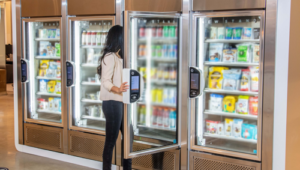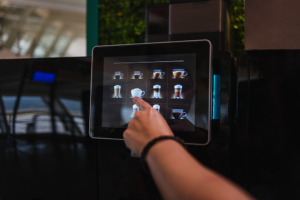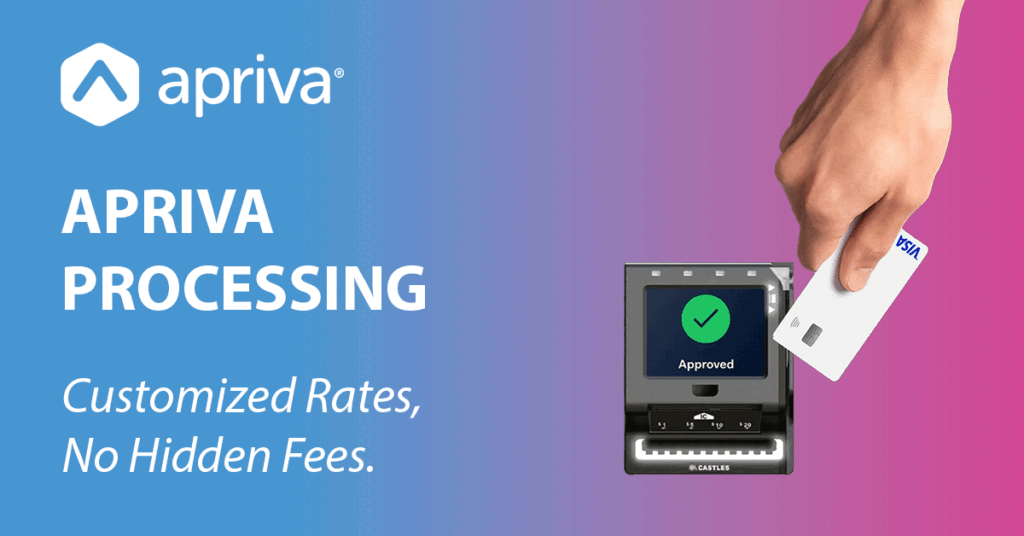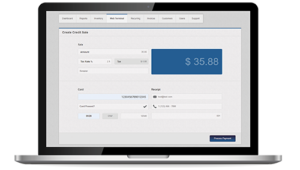What Does The Future of Unattended Payments Look Like?
A Practical Guide to Unattended Payment Innovations

Even if you don’t currently operate a self-service focused business, opportunities to leverage unattended payments are everywhere. Vending machines, kiosks, car washes, laundry services, EV charging, grab-and-go coolers (which can be put in arenas, hospitals, on campuses, and more), AI enabled markets…we could keep going, but we’d be here all day.
The landscape of unattended payments is changing every day. Once, it was revolutionary to accept noncash payments. Today, frictionless markets, autonomous stores and coolers, biometric, and non-traditional payments are all part of the increasingly normalized – and expected – next frontier. Which of these innovative payment technologies will increase your revenue today, and which ones won’t? How can you get your hands on a piece of the pie, while mitigating risks to your business?
Keep reading for a clear sense of how the landscape of unattended payments is changing, how operators can meet the growing demand for innovation – like nontraditional payments and frictionless markets – and how to avoid the pitfalls of innovations that won’t necessarily move businesses forward in the short term.
To make these innovations easier to navigate, we’ve broken them out into 3 categories: innovations that make sense for most operators to implement today; innovations that probably won’t see wide adoption for 2-5 years; innovations that likely won’t see wide adoption for 5 years or more – if ever.
Unattended Payments That Make Sense For Operators to Start Implementing Now:
Contactless Payments
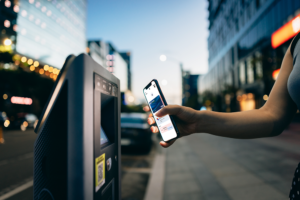 Contactless payments are a way to make payments without using cash or swiping a card. Instead, you can tap or wave your contactless card or payment-enabled device over a contactless-enabled payment terminal. The terminal will then connect with your bank account and complete the payment.
Contactless payments are a way to make payments without using cash or swiping a card. Instead, you can tap or wave your contactless card or payment-enabled device over a contactless-enabled payment terminal. The terminal will then connect with your bank account and complete the payment.
Covid increased consumer use of contactless payment methods, with the majority of Americans using this method today, making it a no-brainer to implement. Plus, if you still have non-EMV payment devices, these Magstripe devices can’t accept mobile wallet payments today. So, it’s likely you’re losing sales and not realizing it. Adding contactless payment acceptance is a quick, easy, and increasingly affordable way to expand your customer base. Click here to learn more about contactless payments.
Closed-Loop Payments
Closed loop payments allow users to load money into a spending account that is linked to a payment device, such as a gift card, or employee, hospital, campus, or military ID cards.
If you haven’t thought about closed-loop payments, you should. This is an easy way to reach new customers today, especially if you operate on or near common closed-loop locations like college campuses, hospitals, corporate campuses, or military bases. These populations often carry ID cards and nothing else. Click here to learn more about closed-loop payments.
Frictionless Payments
Frictionless payments can refer to many things including contactless payments and scanning a QR code to pay. In the unattended market it can also mean opportunities like smart grab-and-go coolers, and AI powered self-check-out markets. Frictionless payments make transactions flexible, convenient, and more secure. The regulations needed to accept this payment method are readily accessible by many payment providers, and open opportunities like the ones we just mentioned.
If you’re not thinking about this, you should! Consumers especially want to see these frictionless solutions in c-stores, on campuses (college, hospital, corporate, military), in arenas, and other areas where long lines and tight schedules are top of mind.
Investment in frictionless can also start small, for example with a single grab and go cooler, to test the waters for your specific market. If you do go down this route, be sure to ask your payment provider how they will handle some common “gotchas”. For example, how much will you be pre-authorizing – what if a customer is authorized to spend $10 before interacting with your frictionless experience, but they buy $20 worth of merchandise…what happens if they have insufficient funds and they’ve already walked away? Or, what if someone interacts with your grab-and-go cooler and purchases all of the water bottles in your cooler, but your supplier doesn’t arrive to restock for another 3 days. Make sure there are solutions in place for scenarios like these.
Unattended Payments That Probably Won't See Wide Adoption For 2-5 Years:
Can Interchange Go Down?
 Maybe. Issuing banks, card networks, merchant acquirers, and payment providers – all charge fees for their services. Some of these fees are non-negotiable, and some ARE negotiable. Some fees are part of what’s known as “interchange rates”. These are publicly published rates set by card issuers, which change about once a year. As of this blog, the current non-negotiable regular interchange rates are below.
Maybe. Issuing banks, card networks, merchant acquirers, and payment providers – all charge fees for their services. Some of these fees are non-negotiable, and some ARE negotiable. Some fees are part of what’s known as “interchange rates”. These are publicly published rates set by card issuers, which change about once a year. As of this blog, the current non-negotiable regular interchange rates are below.
Regular Interchange Rate (as of May 2024) is around:
- 2.2% + $0.12 for credit
- 0.93% + $0.22 for debit
Small ticket interchange rates, however (as of May 2024) are:
- 1.78%+$0.0395 per transaction for Mastercard
- 2.04% + $0.0214 per transaction for Visa Credit
- 1.68% + $0.0575 per transaction for Visa Debit
There is pressure today on card brands and issuing banks to reduce their non-negotiable fees. Operators should frequently ask their providers how to lower their interchange rate, and should avoid long-term interchange rate commitments. Click here to understand what you’re actually paying for, and for 5 tips you can use today to pay less for payment processing. For example, know your average ticket rate! Assuming a mix of card brands, and an average ticket size of $5 or less, then you’re eligible for small ticket interchange fees. Make sure you’re receiving this benefit, if eligible.
Next-Gen Contactless
 With rapid consumer adoption of tapping cards, we’re nearing the tipping point of wide adoption of lightweight, contactless-only payment “puck” POS devices vs. today’s larger and more expensive POS devices. No keyboards, no place to swipe or dip cards. This means the only non-cash payment acceptance ability you’d have would be contactless, if you choose to only use one of these solutions. But – with over half of Americans using contactless payment methods as of two years ago – it’s only a matter of time before this will be everyone’s new normal.
With rapid consumer adoption of tapping cards, we’re nearing the tipping point of wide adoption of lightweight, contactless-only payment “puck” POS devices vs. today’s larger and more expensive POS devices. No keyboards, no place to swipe or dip cards. This means the only non-cash payment acceptance ability you’d have would be contactless, if you choose to only use one of these solutions. But – with over half of Americans using contactless payment methods as of two years ago – it’s only a matter of time before this will be everyone’s new normal.
SoftPOS
SoftPOS, or Software Point of Sale, is a payment system that allows businesses to accept contactless card payments using smartphones, tablets, or other devices with NFC chips. SoftPOS is also known as “tap to mobile” or “tap on phone”. This means businesses can accept contactless payments directly onto mobile devices without the need for a traditional POS device. Today, this concept is not available for unattended use cases in the U.S.
If/when SoftPOS is available for unattended payments, there will be new low-cost and low-maintenance Android devices set up to accept unattended EMV payments. These devices will be affordable and easy to troubleshoot or replace, with less helpdesk, supply chain, and overhead issues compared to current unattended POS device hardware. Please note, that Apriva will always follow the latest PCI standards. As of December 2022 PCI has stated that unattended MPoC solutions are not eligible for the MPoC program (the certification body that will certify SoftPOS solutions). At whatever point that PCI allows unattended MPoC solutions to be eligible, Apriva will be ready to either write our own unattended SoftPOS solution of our own, or support third party solutions.
Unattended Payments That Likely Won't See Wide Adoption For 5+ Years (if ever...):
Biometrics
 Biometric payments rely on unique physical or behavioral traits such as fingerprints, facial recognition, iris scans, or voice recognition. These methods provide a more secure way to conduct transactions because biometric data is more difficult to replicate or steal than traditional payment methods.
Biometric payments rely on unique physical or behavioral traits such as fingerprints, facial recognition, iris scans, or voice recognition. These methods provide a more secure way to conduct transactions because biometric data is more difficult to replicate or steal than traditional payment methods.
While biometrics as a form of payment has been around since 2002, it’s unlikely to be mature or financially beneficial enough for most operators to use in the near future. While some large retailers are using biometrics, such as Amazon and Whole Foods, there isn’t a strong enough driving motivator or benefit to consumers today to make the switch meaningful for most operators. Additionally, enabling biometric payments requires a platform software where the consumer can register their biometric market, and a system that accepts their payment method, plus a platform that links the two together. Right now this isn’t a very seamless (or affordable) process.
Cryptocurrency
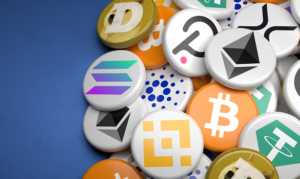 Cryptocurrency, or “crypto”, is a digital currency that can be used as an alternative payment method or investment. Cryptocurrencies are named after the cryptographic techniques that allow people to spend them securely without the need for a central government or bank.
Cryptocurrency, or “crypto”, is a digital currency that can be used as an alternative payment method or investment. Cryptocurrencies are named after the cryptographic techniques that allow people to spend them securely without the need for a central government or bank.
While cryptocurrency gets a lot of press, it’s unlikely to be practical or pragmatic for the industry in the next 5+ years, if ever. And, conversion fees would need to adjust for small ticket rates to be profitable. Plus, with supply limits, regulatory changes, and market liquidity, cryptocurrency remains quite volatile and unpredictable. Plus, with more than 9,000 types of cryptocurrency available today, determining which ones to accept – and convert – isn’t realistic for most operators.
To Learn More or Get Started, Contact us Today!
Thank you for reading about this complex and exciting topic! If you have questions, want to learn more, or even want 1:1 advice from an Apriva payment expert on your unique business model, contact us today! We’re always happy to help.


